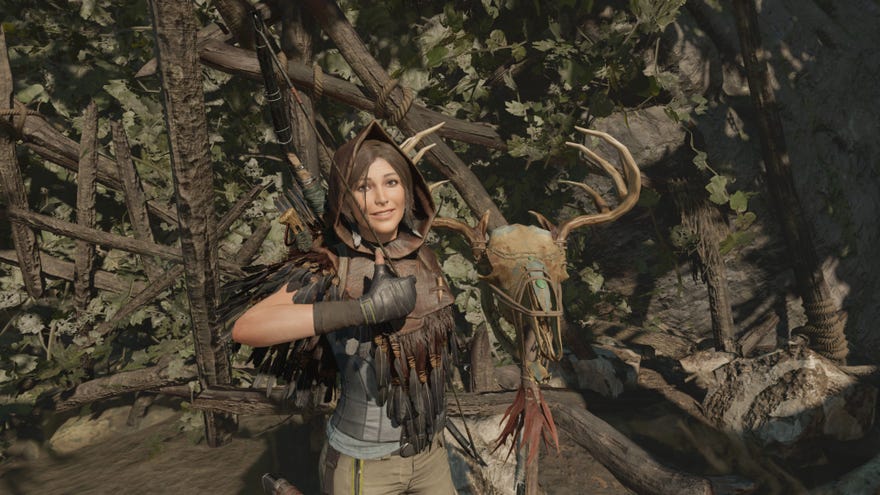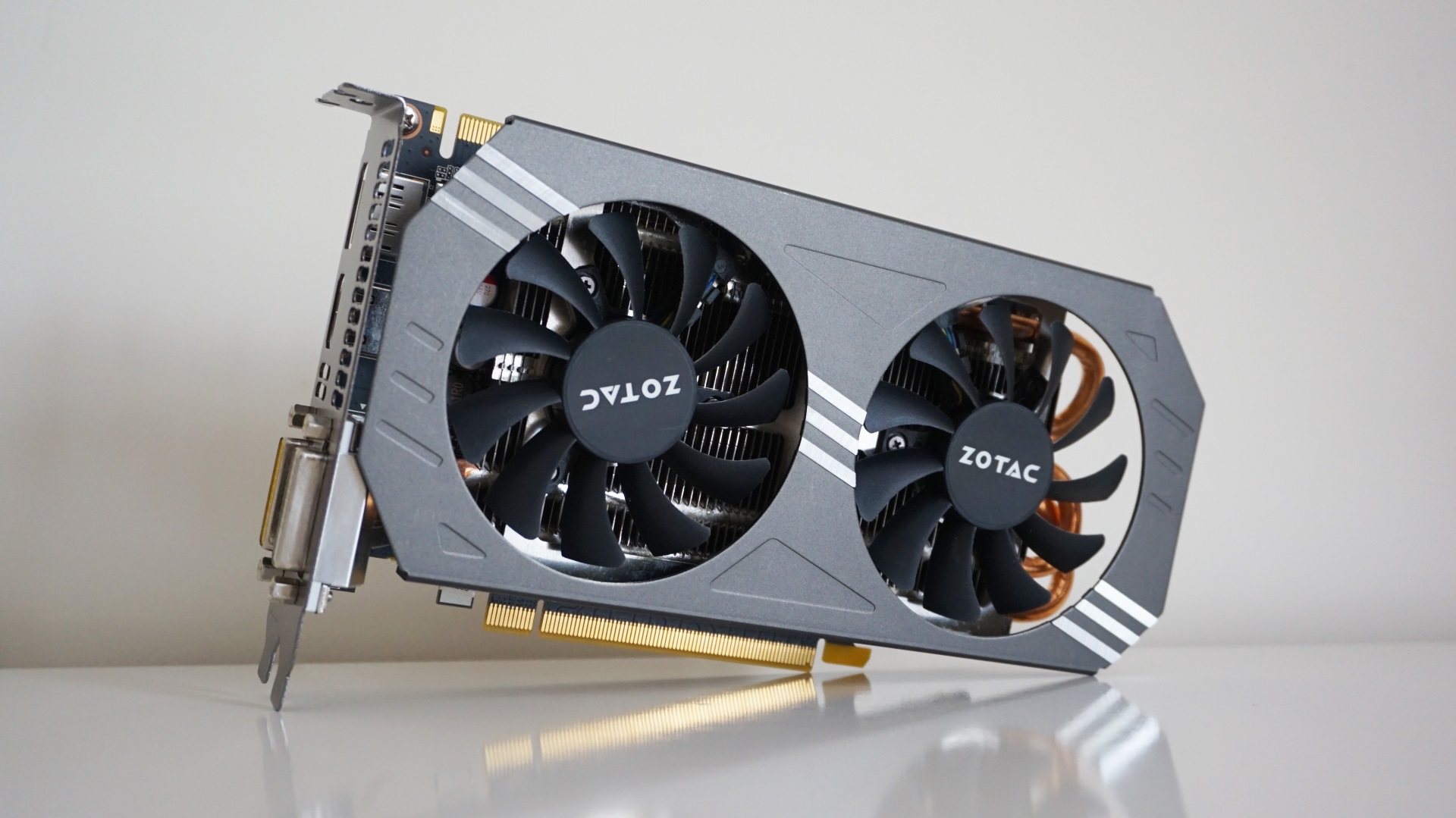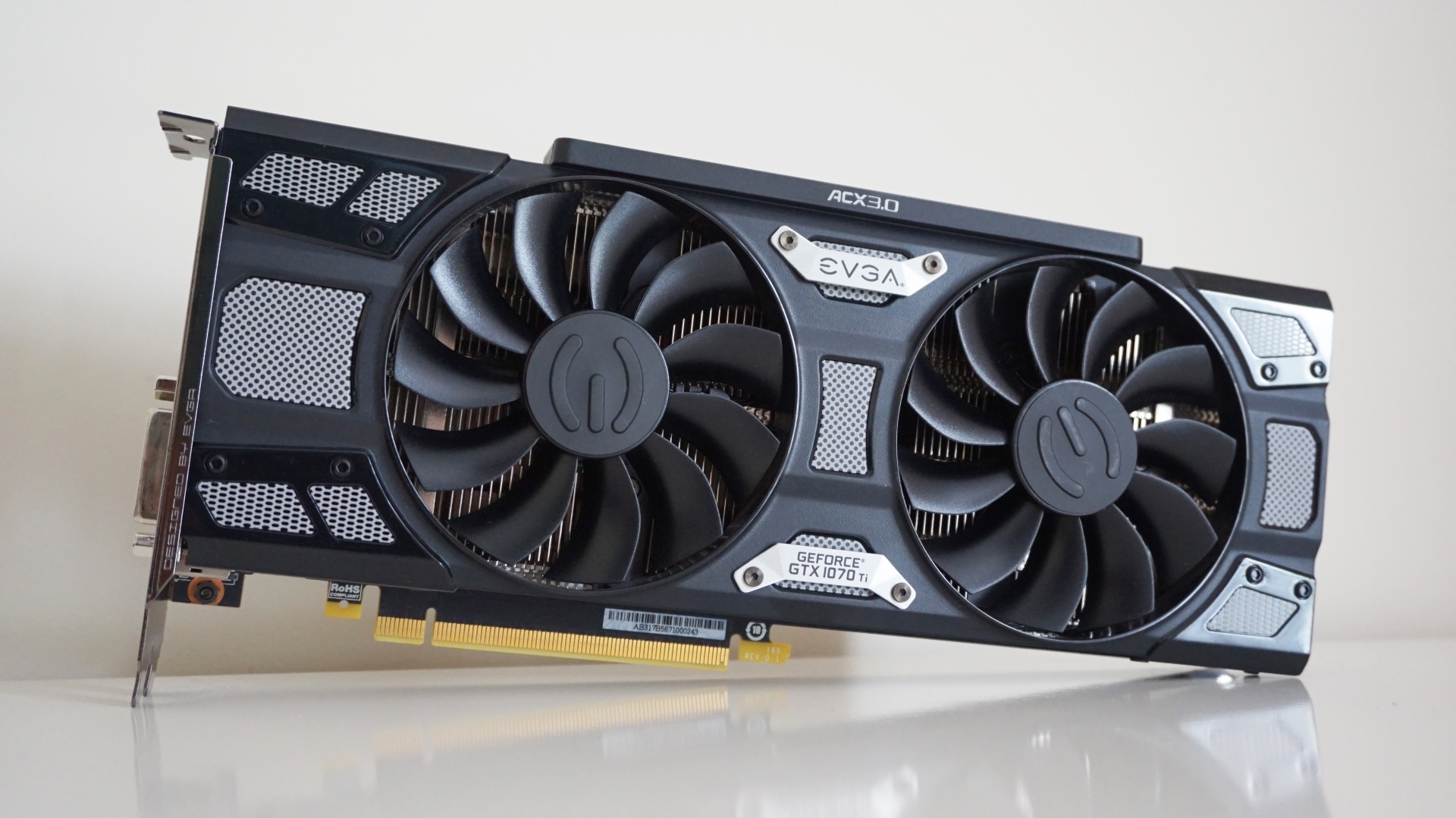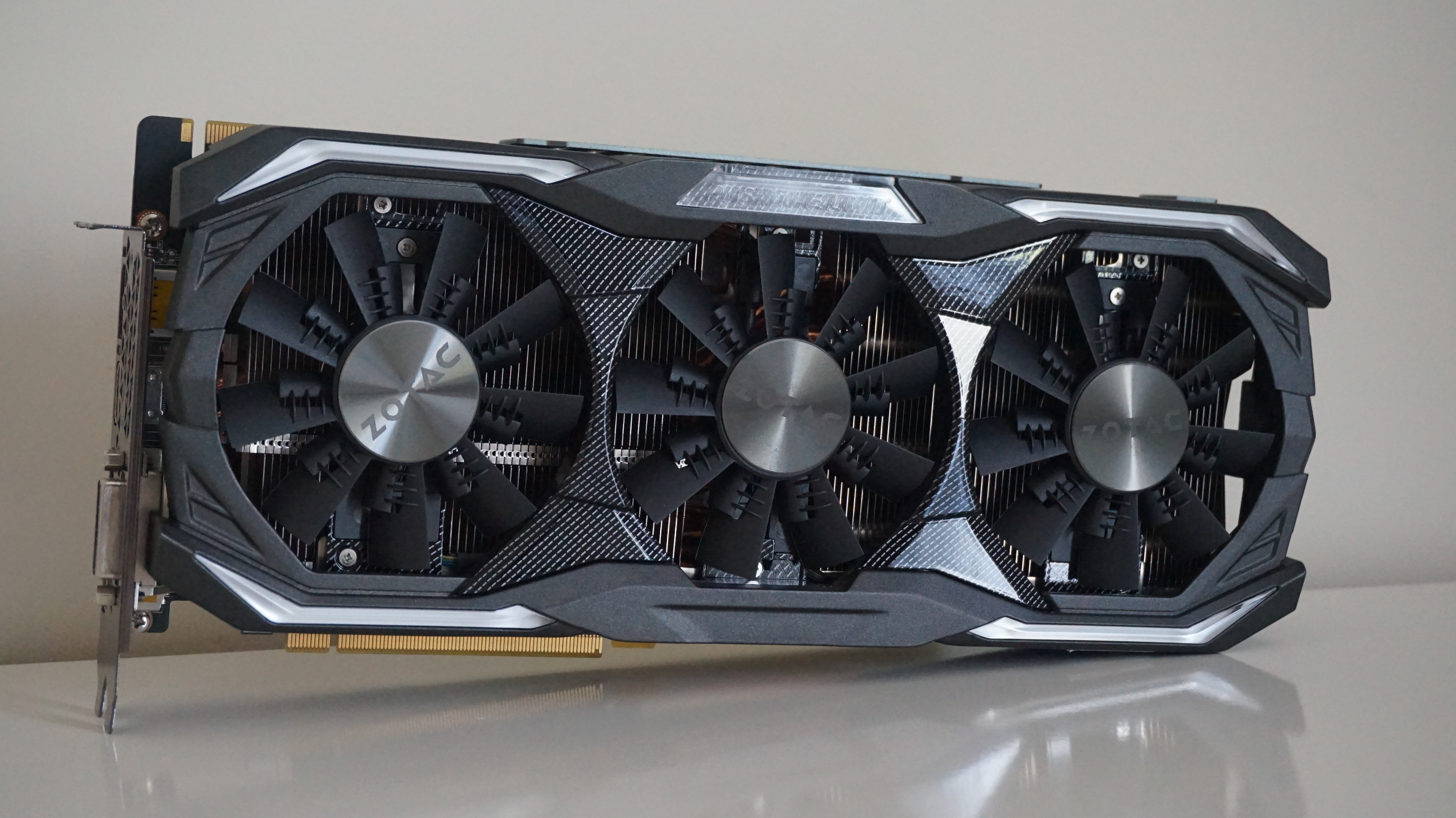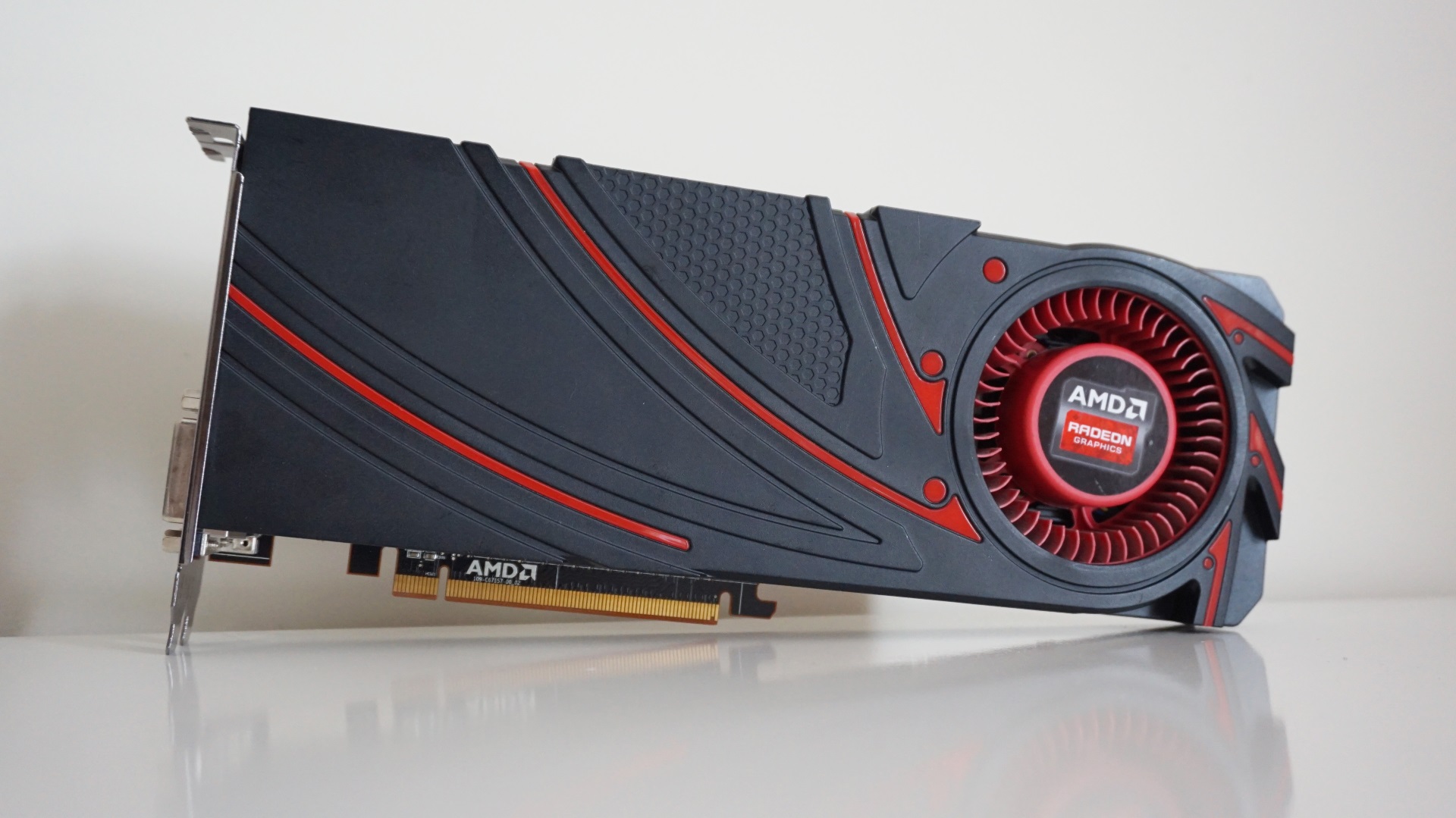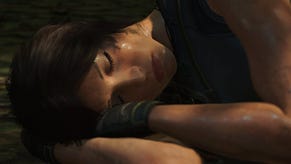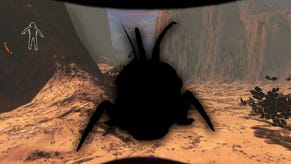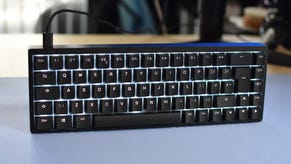Shadow of the Tomb Raider graphics performance: how to get the best settings for your PC
Beyond a shadow of a doubt
The latest Tomb Raider reboot games have always been big technical showcases on PC, and Shadow of the Tomb Raider is no exception. After a slightly rocky pre-release build that's thankfully been ironed out in time for today's release (have a read of John's newly updated Shadow of the Tomb Raider review if you're still unsure), this is easily one of the most demanding games I've played all year, so I decided to chuck a load of today's best graphics cards at it to see how they all hold up.
Shadow of the Tomb Raider PC requirements
Before we begin, here's a reminder of the minimum and recommended specs for playing Shadow of the Tomb Raider:
Minimum specs:
OS: Windows 7 (64-bit)
Processor: Intel Core i3-3220 or AMD equivalent
Memory: 8GB RAM
Graphics: Nvidia GeForce GTX 660 or Nvidia GeForce GTX 1050Ti / AMD Radeon HD 7770
DirectX: Version 11
Recommended specs:
OS: Windows 10 (64-bit)
Processor: Intel Core i7-4770K / AMD Ryzen 5 1600
Memory: 16GB RAM
Graphics: Nvidia GeForce GTX 1060 (6GB) / AMD Radeon RX 480 (8GB)
DirectX: Version 12
As always, the main goal here is to find the best combination of settings to achieve a smooth 60fps at 1920x1080 and 2560x1440. I'll also be adding in 4K performance testing at a later date, but right now, the cards I've tested can just about manage to run it smoothly at 1440p, let alone anything higher, so unless you've got multiple graphics cards at your disposal, I suspect 4K is going to be beyond the reach of most single-GPU PCs.
Right now, I've only had a chance to test the game on its initial opening area in the Cozumel Caves, and the village of Cozumel itself that follows immediately after. The built-in benchmark wasn't available at time of testing, and being a Tomb Raider game, there will almost certainly be more demanding areas in the game further down the line that may not correspond to the figures you'll find on the following pages. Rise of the Tomb Raider had its infamous Geothermal Valley that nuked the frame rate, and judging from other RPS tomb raiding experiences, Shadow's Trial of the Eagle challenge around the 4-5 hour mark is another big frame rate killer thanks to its deadly, rotating puzzle room with about a million moving objects inside it.
As such, I'll be revisiting these figures once I get a little further into the game, but even the opening area of the Cozumel Caves proved quite a big ask for almost every graphics card you'll find listed above. In some cases, there was a gap of up to 20fps between the lowest and highest frame rates I recorded, with the game often slowing to a crawl as soon as Lara started scaling her first, knobbly wall with her trusty pick-axes. As such, Cozumel Square is probably a better indication of the kind of overall speed you'll see in most areas, as here the frame rate was much more stable, varying between 5-10fps at the most, despite there being lots of people dancing about in the town square and setting off fireworks and the like.
Shadow of the Tomb Raider: how to get the best settings
In most cases, I've tried to stick as closely to the game's preset graphics settings as possible, but as with all nu-Tomb Raider games, it's the anti-aliasing effects that pose the biggest threat to achieving a smooth and stable frame rate.
There are a lot of options to choose from, all with their own impenetrable acronyms. There's the basic SMAA, which is the least demanding choice and actually produces nigh-on identical speeds as having it turned off altogether. Then there's the slightly fancier TAA, which I found produced pretty much exactly the same speeds as the next rung up, SMAAT x2. As such, I've pretty much discounted TAA as an option, as it not only looks worse than SMAAT x2, but you're not gaining any extra performance from it either.
Then above SMAAT x2, you've got the WARNING WARNING signs of the big daddy SMAA x4. This is really quite taxing on the old GPU front - even for higher end cards. Some of them can do it, but generally, I've found that the SMAAT x2 setting provides the best compromise between obtaining all those lovely smooth edges and still getting reasonably nippy frame rates.
I'd also advise against settling for Shadow's Lowest graphics setting, as this just looks so awful it's not even worth playing. This is because Lowest is the only graphics settings that turns off volumetric lighting, which (as you can see from the series of images below) just destroys any sense of depth or natural lighting and genuinely makes me want to do a little vom in my mouth every time I look at it. So try and keep that turned on if you can.



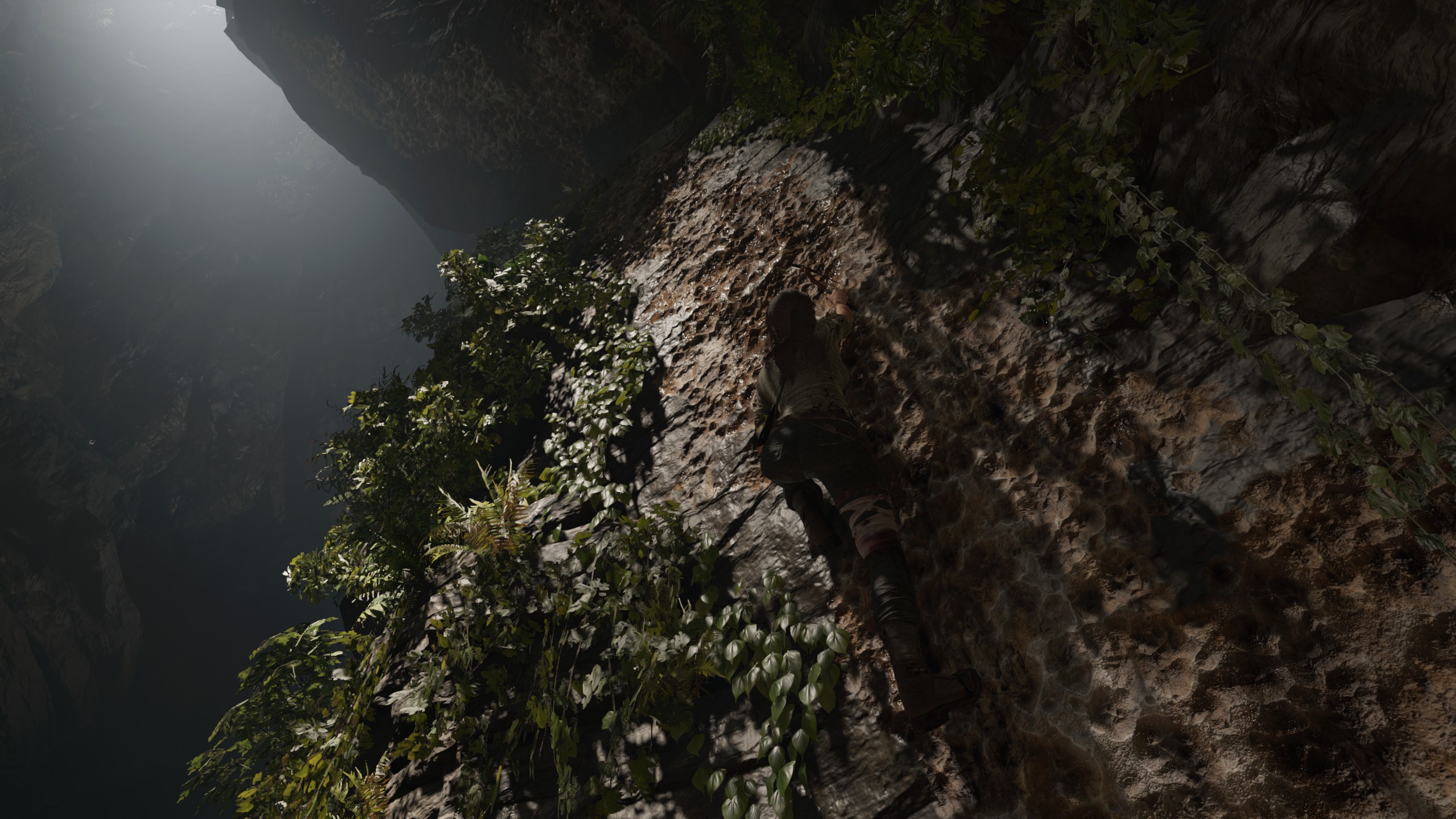
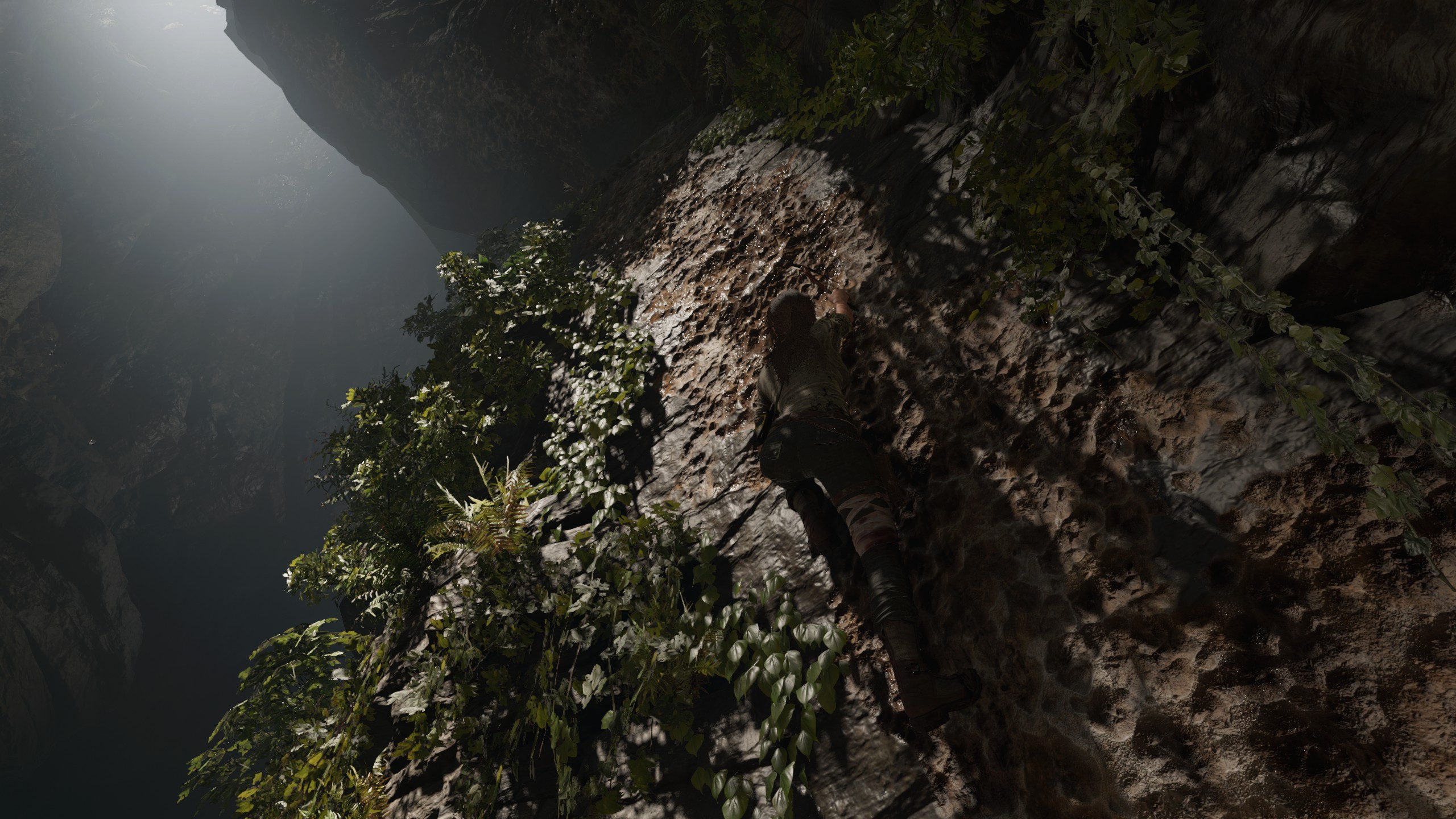
Otherwise, I found Shadow's myriad of other settings didn't make a huge amount of difference in the grand scheme of things, whether it was Lara's luscious Pure Hair (which only varies between Low or Normal with no Off option) or the ambient occlusion.
Shadow of the Tomb Raider graphics performance
With all that in mind, here are the results from my graphics card testing. My test PC well exceeds the recommended spec, as I've been testing everything with an Intel Core i5-8600K clocked at 3.6GHz and 16GB of RAM on Windows 10 with DirectX 12, plus all the latest drivers. To see how all the different graphics cards fared, click the links below or carry on scrolling to read the whole lot.
- Nvidia GeForce GTX 970
- Nvidia GeForce GTX 1060
- Nvidia GeForce GTX 1070
- Nvidia GeForce GTX 1070 Ti
- Nvidia GeForce GTX 1080
- AMD Radeon R9 270
- AMD Radeon R9 290
Nvidia GeForce GTX 970
Once a titan of its day, the GTX 970 is starting to show its age a bit now. The one on test here is the Dual Fan model from Zotac, which has 4GB of memory and respective base and boost clock speeds of 1076MHz and 1216MHz. That's a little faster than Nvidia's reference spec, so results may vary depending on what kind of card you might have, but it should still give a pretty decent idea of what to expect from this now quite elderly graphics card.
That said, the GTX 970 is still a little way off from being completely put out to pasture, as I still managed very decent frame rates at both 1920x1080 and 2560x1440, albeit with a couple of compromises. It won't provide the best experience you've ever seen, but you'll still have a grand old time if upgrading remains beyond the realms of your budget.
Can I play this at 1920x1080?
You can indeed. You'll need to keep the game's anti-alias settings quite low if you want to use some of the better graphics settings on offer, but High with SMAA produced a very respectable average of around 57fps when walking through the bustling crowds of Cozumel village, with lows of 55fps and highs of 61fps. The frame rate dipped a little further to 48fps when Lara was nosing her way up its heavily-textured walls, but it bounced back pretty quickly once Lara was back on her feet.
Those after smoother edges and better anti-aliasing, however, can get a playable, if slightly juddery 36-46fps on Medium with the demanding SMAAS x2 enabled, or you can settle for the altogether silkier SMAAT x2 option on Medium and get a superior 50-63fps instead.
Can I play this at 2560x1440?
Surprisingly, yes, but really you're only looking at Low with SMAA at this resolution. Here, you'll get a decent range of 43-60fps across both areas, with Cozumel square never dipping below 48fps. That's not bad for such an old card, but really, 1080p is your best bet for overall quality.
Nvidia GeForce GTX 1060
Despite being a lot smaller than other GTX 1060 cards out there, Zotac's miniature version of Nvidia GeForce GTX 1060 did quite well in my Monster Hunter: World graphics performance test, and it's the Nvidia-branded card that Eidos Montreal included in their recommended specs.
However, as much as this is a great choice for playing games at 1920x1080, it struggled to keep its cool once I raised the resolution. That's not to say you can't get some decent speeds out of it, but it remains one of the more disappointing set of results in this entire test.
Can I play this at 1920x1080?
Absolutely. The top SMAA x4 anti-aliasing option is probably too much for this card on Highest, resulting in frame rates in the low 30s to 40s, but whack it down to the still lovely SMAAT x2 and you're laughing. Here, the GTX 1060 managed a very smooth 54-57fps in Cozumel's village square, with only the occasional dip to 45fps when Lara was hugging her favourite cliff face over in the caves.
You can drop it down to SMAA if you really want to be sure you're as close to 60fps as possible on Highest, but it's not necessary. If anything, you'd probably be better going for High and SMAAT x2 again if 60fps is the be all and end all for you, as here I saw frame rates between 62-65fps in Cozumel, and only lows of 50fps inside the caves.
Can I play this at 2560x1440?
Yes, but Medium is the absolute limit here, and with pretty low AA settings to boot. You can push the anti-aliasing higher if you're down with frame rates between 35-45fps, but those after something closer to 60fps are better off settling for the basic SMAA. Even with these settings, it's unlikely you'll see anything above 50fps, but for some that may be a more appealing option than playing the game on Low with SMAA, where frame rates hovered around the 48-67fps range.
Nvidia GeForce GTX 1070
Asus' beefy take on the Nvidia GeForce GTX 1070 is probably a touch faster than most other cards of this type out there, boasting a base clock speed of 1632 MHz and a boost clock of 1835 MHz, but if you're after the best 2560x1440 experience, the GTX 1070 is definitely the card to go for.
It was eminently more capable of handling this resolution at higher graphics settings than the GTX 1060, and going forward will probably offer a lot more future-proofing for 1440p gaming in general if you've got enough spare cash.
Can I play this at 1920x1080?
Indubitably. The GTX 1070 made mincemeat of Shadow on Highest, even hitting a perfect 60fps with its top SMAA x4 anti-aliasing setting. You'll still see the odd dip to 40fps, all told, so if you want the absolute bestest best frame rates on offer, you're probably better off dropping it down a notch to SMAAT x2 for 60fps+ perfection.
Can I play this at 2560x1440?
Also yes. On Highest, the SMAAT x2 anti-aliasing produced the smoothest experience, ranging between 42-58fps in the caves and see-sawing a couple of frame either side of 50fps in Cozumel's square, but knock it down a peg to SMAA (TAA produced identical results to SMAAT x2, so I'm discounting that as an option) and you'll get between 44-62fps. However, it's such a small improvement that you might as well treat yourself with the higher AA settings instead.
You can inch a little closer to 60fps by opting for High and SMAA, which gave me a flawless 59-63fps in the town and lows of just 49fps in the caves, but personally I was perfectly happy with Highest and SMAAT x2.
Nvidia GeForce GTX 1070 Ti
Unlike the rest of Nvidia's GPU fold, all third party Nvidia GeForce GTX 1070 Ti cards share exactly the same base and boost clock speeds of 1607 MHz and 1683 MHz respectively. This should make EVGA's SC Gaming take a pretty representative take on what the GTX 1070 Ti is capable of in Shadow of the Tomb Raider, but they manage to skirt round Nvidia's weird rule by giving you the option of optimising the card with their EVGA Precision software.
To keep things nice and fair, I've left my GTX 1070 Ti as is, running it at its default speeds without any additional tinkering. As a result, this should paint a pretty accurate picture of what's possible with this card, which, it turns out, is quite a lot.
Can I play this at 1920x1080?
You sure can. If you're feeling particularly indulgent, you can even choose Eidos' super demanding SMAA x4 option on Highest and still get highs of 60fps. You may see the odd drop to 45fps when Lara's getting up close and personal on a bit of cave wall, but otherwise it's pretty plain sailing, with frame rates never dipping below 58fps in Cozumel's bustling town square.
If you've got a monitor with a high refresh rate, however, you'll get a lot more out of it by choosing the SMAAT x2 anti-aliasing option on Highest, which saw the frame rate shoot up to an absolute minimum of 70fps in the caves and a maximum of 90fps in town.
Can I play this at 2560x1440?
Yep. Again, SMAA x4 is doable here on Highest, but you'll have to put up with frame rates in the 30-40fps region. Instead, you'll get much better speeds with SMAAT x2, which struck a very happy medium of 55-59fps in town, and only a couple of dips to 47fps over in the caves. You can claim a few frames back by opting for SMAA on Highest, the lowest I saw being 50fps, but I don't think it's something you'll really notice on the whole.
Instead, a more assured option would be to stick with High and SMAAT x2 anti-aliasing. Here, you'll get an absolute minimum of 52fps while pushing up into the 60-70fps the rest of the time.
Nvidia GeForce GTX 1080
This absolutely giant Zotac card is one of, if not the fastest Nvidia GeForce GTX 1080 GPU around - and with good reason. With a base clock speed of 1771MHz and a boost clock speed of 1911MHz, not to mention a whopping three fans, this a true monster of a graphics card.
As such, it may be a touch faster than other GTX 1080s out there, but as a best case scenario for what this card is capable of, it sure is mighty promising. Here's what you can expect.
Can I play this at 1920x1080?
Hoo boy, yes indeed - and at the absolute maximum settings, no less. Stick it up to Highest with SMAA x4 and enjoy those sweet, sweet frame rates of 55fps at the very least, and delicious highs of 80fps at the very top.
Can I play this at 2560x1440?
You sure can, but you may have to put up with the odd hitch down to 36fps if you want to keep that lovely SMAA x4 on Highest. Personally, I found my trusty SMAAT x2 anti-aliasing option to be the best bet here, as the frame rate never went below 55fps with this enabled, and maintained a smooth 68-76fps practically everywhere else.
AMD Radeon R9 270
Ah, my good old R9 270. This five-year-old card failed miserably when I subjected it to my Monster Hunter: World graphics performance test, and - surprise, surprise - it also failed miserably to hold its own in Shadow of the Tomb Raider.
It's not surprising, really, with just 2GB of memory to its name, and its base clock speed is pretty rubbish as well, reaching just 920MHz. While it's technically newer than AMD's minimum AMD graphics card recommendation, the Radeon HD 7770, I wouldn't recommend playing with it if you can help it.
Can I play this at 1920x1080?
Top marks for trying, but the R9 270 simply isn't cut out for anything better than Low here, and even then you're only looking at a frame rate somewhere in the mid-30s to high 40s with the anti-aliasing options turned down to SMAA.
I managed between 35-41fps in the busy square of Cozumel with the R9 270, but emptier, more chasm-sized tombs and caves may see it rise to as much as 48fps if you're lucky.
Disabling the anti-aliasing completely actually did very little to improve the frame rate, so if you're adamant about playing Shadow of the Tomb Raider with this particular graphics card, you might as well suck up the extra 2-3fps you'll gain and have some smoother-looking edges instead.
You can just about edge into the 40-50fps region if you opt for Lowest, but trust me, no one wants that.
Can I play this at 2560x1440?
Hahahahaahhahahahahaha hahahahahah haha hah.
AMD Radeon R9 290
It might belong to the same 200-series of GPUs as the R9 270, but AMD's trusty R9 290 shows there's still plenty of life left in this old card yet. With 4GB of memory at its disposal, the R9 290 is much better equipped to deal with today's latest games than its infinitely frailer cousin, and it continues to hold its own as a decent choice for 1080p gaming.
Admittedly, the piddly little blower on this particular reference card kicked up a right old fuss during the course of my testing, but third party models will no doubt offer better cooling, and might even be a touch faster as a result. Here's how it got on.
Can I play this at 1920x1080?
You sure can. You can get away with Shadow's Highest graphics setting with SMAA anti-aliasing enabled (the lowest frame rate I saw was 42fps in Cozumel caves with highs between 50-60fps across both areas), but the R9 290 is definitely most comfortable on High.
SMAAS x2 anti-aliasing is a bit too much for it, with the frame rate veering between 30-45fps in the caves and a steadier 30-35fps in Cozumel's town square, but drop the AA down a notch to SMAAT x2 and you're looking at a much smoother range of 48fps to just over 60fps.
If a sub-50fps isn't quite good enough for you, though, your options are to either play on High with SMAA, earning you a frame rate somewhere between 52-66fps, or drop down to Medium with SMAAT x2 for pretty much the same kind of speed.
Can I play this at 2560x1440?
Just about, but you're pushing your luck. Medium on SMAA once again hovered around a playable but ultimately slightly shonky region of 36-46fps, but those after something even vaguely near 60fps will have to make do with Low and SMAA for a frame rate between 48-62fps.
